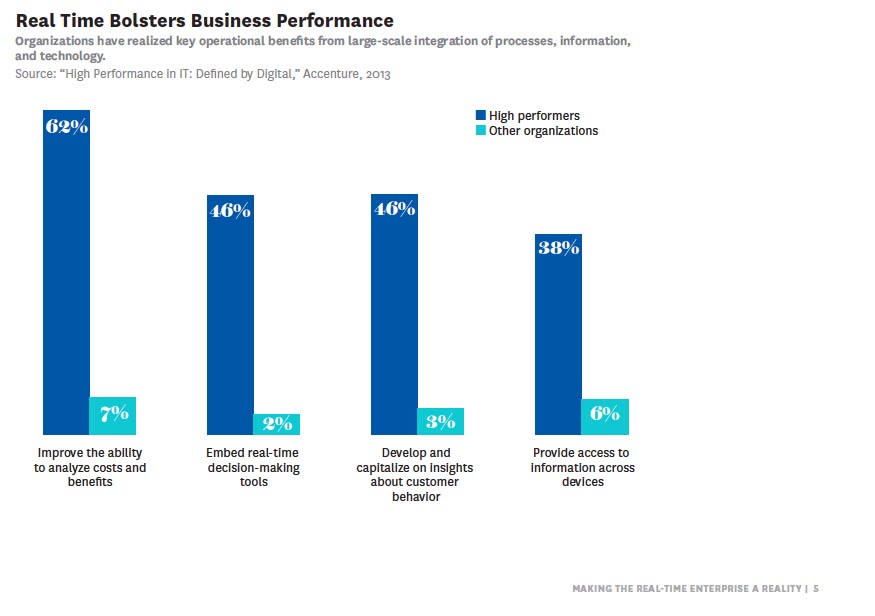Real Information, Real Time, Real (Financial) Results

Everybody used to be happy with ‘historic data’
Historical data: the phrase evokes images of dusty ledgers, crumbling pages and information with increasingly limited current operational value. We all know that historic data is critical for compliance and regulatory reporting but is it useful in an operational sense?
Things change so fast nowadays. Using historic data might make for a lovely anecdote to tell around the boardroom table, but actually it is not really for decision-making now. E-commerce is here now and decisions on pricing, capacity utilisation and volumes increasingly need to be made immediately to keep operations running smoothly.
Things change
With ever-changing market conditions, decision-makers increasingly need access to today’s information, not something a month old. If you assess what has happened the lag-time begins to feel a bit scary (and irrelevant). Do you find yourself manually incorporating the report with current activity and then make a decision based on extrapolated information.
Look at it this way – do you drive your car only using the rear-view mirror?
Financial impact of real time data
Organisations with highly accurate analytic capabilities outperform the competition. Retail giants like Walmart and Tesco are setting the standard for instant information, both on the acquisition (purchase) side and for inventory control. They know what products are selling, how efficient their logistics teams are, and how lean their inventory levels are, at all times. Granted, they are massive, multi-national corporations, but the theory of near-instant information, and it’s reality, can be applied to an enterprise of any size.

How do you get there?
You know the end result you want (instant, relevant information to inform decision making) but what are the steps to achieve that result?
- Start small with one discrete operation
- Collect and build upon data collected with the new process
- Take note of how perspective and perception of the business changes with new data
- When you know how to improve results with up-to-date information for this one process, start with the next
Beginning with one area of the company at a time is manageable but, you also need the information technology in place to deliver this information enterprise-wide. The overall aim of this undertaking is to nudge the gross profit percentage upward little by little, whilst also reducing business risk.
Working examples of how to do this
Determine the core aspects that will either solve a problem or generate more business. From there, implement a real-time data strategy for that single section of the business.
In our case study, we look at a real example of how APH helped a company with better utilisation of its mobile workforce. The workers were able to update the database continuously using their hand held devices. The Finance Director knew day-by-day the margin and utilisation being achieved, and the operational manager had a view on capacity and sales opportunities across the whole of this function.
Unsurprisingly, both the turnover and margin both increased with the move to a proactive, dynamic management system. In addition, the company could understand and manage its spare-parts stock better with proactive management. All in all, the business had better control over operations.
In another example, inventory management can be better controlled with scanning, automatic stock levels and reordering workflows. With accurate knowledge of stock levels, it is possible to reduce headcount dedicated to stock taking activity, saving hours of work every month.
These examples show how to build on success.
Additional Benefits of Instant Information
What happens when information isn’t all generated from the same system?
HR, Accounting, Inventory all have records, but what is the common denominator and how does that affect the results? How do you make all the ingredients work together instead of turning into a confusing mess where the actual position is hidden in contradictory positions?
The use of instant information helps to blend together elements that don’t normally interact. Pay grade changes, additional staff hiring, change in inventory, all affect the net income of a business. When looking at these changes in current modes, instead of in historical terms, you can account for anomalies in bottom line results.
Collaboration drives the best results
Collaboration in decision making is enabled with up-to-the-minute information. Any and all departments can contribute to the future health of the company by giving real insights to management. Encourage collaboration with all levels of employees despite traditional company decision-making style:
-
Even if the company is structured with a top-down decision making style, collaboration provides the top management with input in the form of information from the “front lines”
-
Instant information creates an atmosphere of sharing and involvement between all departments
-
Inviting brainstorming into the culture builds an environment of innovation through real-time information
Enable the business with new technology, and empower the human element of the company with knowledge. Instantaneous data can be used for brand managers in times of contract renewal with vendors. Or use it for retail orders on-line that are then picked up in-store.
The Real Result
What actually happens when an organisation implements a change on any scale? Overall, leads to a change in approach from top to bottom. Instead of being on the back foot, looking at history, you begin to look to the future and move to the front foot. It can be a step change in competitiveness.
{{cta(‘d81f0aab-6030-47c8-b1dc-b28695de2074’)}}

